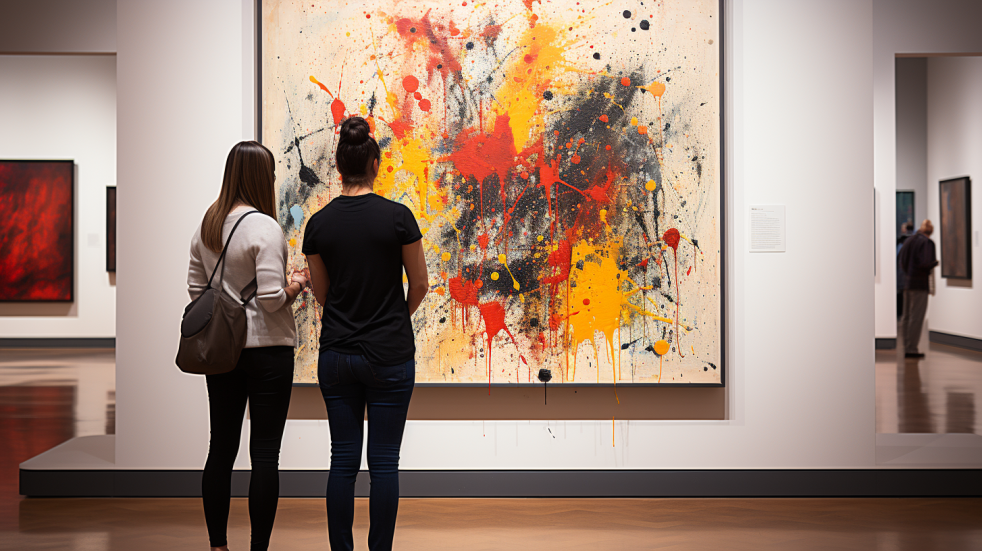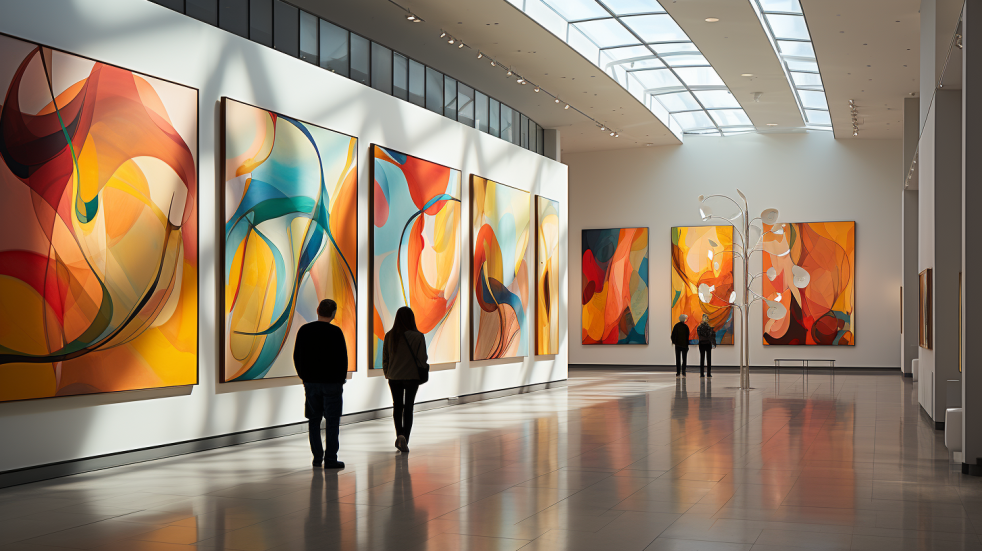Former CEO of Deutsche Bank, Josef Ackermann, said, “A company without a collection is like a person without a memory.”
Since the 1970s, DB has grown and maintained one of the largest art collections of any financial institution on Earth, among stiff competition.
Art not only diversifies a bank’s portfolio, but it also builds their brand as tastemakers, as these collections can often be showcased in exhibitions, cultural events, and museums.
Let’s explore 5 banks with notable blue-chip art collections:
1. Deutsche Bank
Est. Value: $65 Million (57,000+ Works)


Deutsche Bank – with one of the largest corporate art collections in the world, this bank owns over 57,000 pieces including works by artists like Richter and Giacometti which have sold for millions.
2. UBS
Est. Value $100+ Million (30,000+ Works)


UBS – acquiring art since the late 1960s, this Swiss multinational investment bank has one of the most impressive and valuable art collections in the world. While not disclosed, the collection’s value is estimated in the 100s of millions of dollars.
3. Bank of America
Est. Value Unknown (30,000+ Works)


Bank of America – this bank’s collection includes more than 30,000 works of art, with pieces dating back to the 18th century. They are notorious for making their collection available to the public through various exhibitions and events.
4. JP Morgan
Est. Value: Billions of dollars (30,000 + Works)


JPMorgan Chase – this collection might be one of the most valuable, estimated to be worth billions, with some individual works fetching tens of millions of dollars at auction.
5. Société Générale
Est. Value: Unknown (1,800+ Works)


Société Générale – a younger but still mighty collection, this French bank’s collection was created in 1995 and combines painting, graphic arts, photography and sculpture from top artists worth millions.
So why do these banks have such large collections? Aside from the obvious beauty and cultural significance, the finance geniuses running these organizations know a secret about fine art that the average person does not…
Historically, fine art has served as an excellent storehold of value, allowing its collectors and investors to consistently grow their wealth at a high-rate of return. Its all-weather nature comes with a history of outperformance vs. mainstream assets, and even increasing in value when inflation is high, or the stock market is sinking.
However, up until now, there’s been a problem. These collections may seem so out of reach, either physically or because of their legendary status, as to be unattainable. But that’s all changing, thanks to the power of technology, and a group of art and finance experts working out of Manhattan’s financial district at a company called Masterworks.
Masterworks’ art investing platform is transforming and democratizing the art market, allowing anyone to collect and actually invest in masterpieces by artists like Picasso, Banksy, Basquiat, and more. They’ve already offered over 300 masterpieces ranging from six-figures to eight-figures in value. (Across Masterworks’ first 282 qualified offerings (not exited), the average offering amount was $3,003,300.) However, Masterworks members can invest in shares starting as low as $20 per share.
It’s finally possible to build a diversified portfolio of famous artworks at a fraction of the typical cost of buying whole artworks. Additionally, through October 2023, Masterworks has exited – or sold – 16 of their works. They’ve all recorded positive returns and provided over $10 million in profits to investors (net of fees).*
*[Please note: All investing activities involve risks and art is no exception. Risks associated with investing through the Masterworks platform include the following: Your ability to trade or sell your shares is uncertain. Artwork may go down in value and may be sold at a loss. Artwork is an illiquid investment. Costs and fees will reduce returns. Investing in art is subject to numerous risks, including physical damage, market risks, economic risks and fraud. Masterworks has potential conflicts of interest and its interests may not always be aligned with your interests.
Liquidation timing is uncertain. Expenses and fees are listed in our Offering Circulars. Note: Fees are 1.5% per annum (in equity), 20% profit share, and certain expenses are allocated to the investment vehicle. Investors should review the offering circular for a particular offering to learn more about fees and expenses associated with investing in offerings sponsored by Masterworks. Masterworks will receive an upfront payment, or “Expense Allocation” which is intended to be a fixed non-recurring expense allocation for (i) financing commitments, (ii) Masterworks’ sourcing the Artwork of a series, (iii) all research, data analysis, condition reports, appraisal, due diligence, travel, currency conversion and legal services to acquire the Artwork of a series and (iv) the use of the Masterworks Platform and Masterworks intellectual property. No other expenses associated with the organization of the Company, any series offering or the purchase and securitization of the Artwork will be paid, directly or indirectly, by the Company, any series or investors in any series offering. For more information, see “IMPORTANT DISCLOSURES” at Masterworks.com/cd
This post was sponsored by Masterworks.com/cd




